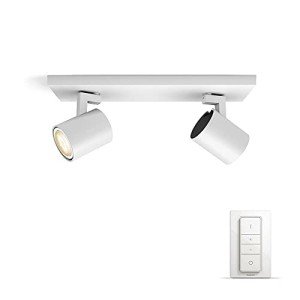Decorative Lighting in the UK: A Comprehensive Guide
In the last few years, decorative lighting has actually taken centre phase in interior decoration across the UK. House owners and decorators alike are significantly acknowledging the significance of lighting not just for functionality, but also for visual appeals. This short article explores the numerous types of decorative lighting offered, the current patterns in the UK market, and useful ideas for selecting and installing the right lighting to boost various areas in homes.
Understanding Decorative Lighting
Decorative lighting incorporates a broad range of lighting fixtures that serve to enhance the charm of a space while likewise offering illumination. This kind of lighting includes a touch of style, character, and heat to environments, producing state of minds and highlighting architectural features. The essential difference between decorative lighting and other forms of lighting, such as task or ambient lighting, is that decorative lighting mainly aims to create visual appeal.
Kinds Of Decorative Lighting
There are various forms of decorative lighting that property owners can pick from, consisting of:
- Chandeliers: Often the focal point of dining locations or grand entryways, chandeliers are complex lighting fixtures with multiple bulbs and artistic designs.
- Pendant Lights: Suspended from the ceiling, pendant lights are offered in various designs, making them appropriate for kitchen areas, dining areas, or living rooms.
- Wall Sconces: Mounted on walls, these fixtures can supply ambient lighting or spotlight specific areas, such as art work or architectural information.
- Table Lamps: Used on bedside tables, desks, or side tables, they can vary from minimalist styles to elaborate artistic pieces.
- Floor Lamps: These versatile fixtures can fill empty corners while offering both ambient and task lighting.
- Fairy Lights: String lights or fairy lights add a whimsical touch to both indoor and outdoor areas, ideal for developing a welcoming atmosphere.
- Neon Signs: An emerging trend, neon signs include a modern, city style and are popular for home bars, games rooms, and individual spaces.
Current Trends in Decorative Lighting
The UK lighting market has actually seen several evolving trends that reflect consumer choices and advancements in innovation. A few of the prominent patterns include:
- Sustainable Lighting: Eco-friendly choices, such as LED lighting, are increasingly favoured for their energy effectiveness and lower carbon footprint.
- Smart Lighting: Integration of smart technologies permits house owners to control their lighting through smart devices or voice assistants, providing convenience and versatility.
- Vintage and Industrial Designs: The rustic beauty of vintage and industrial styles remains in vogue, as they can easily mix with both modern and traditional interiors.
- Geometric Shapes: Light fixtures featuring vibrant geometric shapes contribute to a contemporary visual that interest modern property owners.
Picking the Right Decorative Lighting
When choosing decorative lighting, it is necessary to consider the following aspects:
- Purpose: Determine the primary purpose of the lighting. Is it to develop a welcoming atmosphere, highlight art work, or provide practical lighting for activities?
- Style: Carry out research to guarantee that the chosen lighting matches the existing decor and reflects individual style choices.
- Size: Consider the scale of the space. Extra-large fixtures can overwhelm little spaces, while small alternatives may appear lost in larger locations.
- Positioning: Think seriously about where the fixtures will be installed, ensuring they are available and effectively illuminate the intended areas.
- Energy Efficiency: Opt for energy-efficient LEDs whenever possible to save money on energy costs and add to sustainability.
Installing Decorative Lighting
When decorative lighting choices have been picked, correct installation is key to achieving the desired impact. Here are some guidelines to follow:
- Mounting Height: Ensure that chandeliers and pendant lights hang at a proper height. They need to supply adequate light without obstructing views or movement.
- Layered Lighting: Incorporate different layers, consisting of job, ambient, and decorative lighting, to develop balance and depth within a space.
- Dimmers: Installing dimmer switches can supply versatility in adjusting light intensity based on activities and mood.
- Expert Assistance: For complicated installations, it may be beneficial to employ an expert electrical contractor to ensure safety and compliance with regional regulations.
Decorative lighting provides a great opportunity for house owners in the UK to reveal their design while boosting the performance of their areas. With a variety of options readily available, careful consideration of factors such as style, size, and positioning can result in sensational outcomes. As trends continue to evolve, individuals can stay on the cutting edge of decorative lighting style.
Regularly Asked Questions (FAQs)
Q: What is the difference in between decorative lighting and ambient lighting?A: Decorative lighting is primarily focused on aesthetic appeal, while ambient lighting provides general illumination for a space. Suggested Website : How can I choose the best size chandelier for my dining room?A: A typical guideline of thumb is to add the dimensions of the room(
in feet)and use that number as the diameter of the chandelier(in inches ). Q: Are LED lights appropriate for decorative lighting?A: Yes, LED lights are commonly utilized
due to their energy effectiveness, long life-span, and ability to come in various designs. Q: Is it necessary to seek advice from an expert for installation?A: While some setups can be done DIY, it's recommended to
seek advice from an expert for complex setups to guarantee security and
compliance. Q: What materials are popular for decorative lighting fixtures in the UK?A: Common materials consist of glass, metal, material, and wood, each contributing to different styles and aesthetic appeals. By understanding the different kinds of decorative lighting readily available, staying informed about the current patterns, and following necessary standards for selection and installation, anybody can transform their home into beautiful sanctuaries of light.

